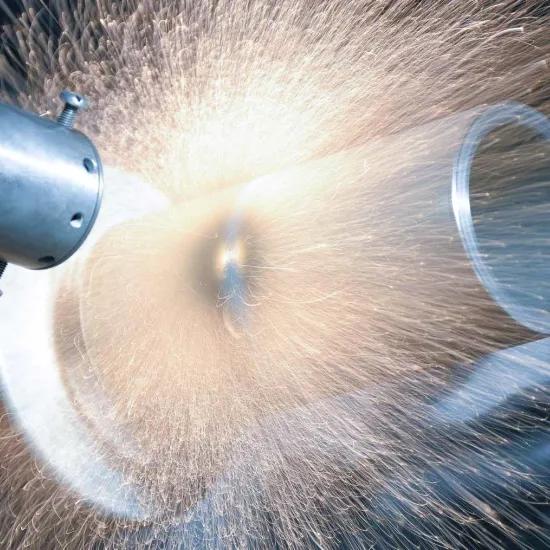We have found how executive management can speed up the transition to a circular economy. The good news is that it does not require heavy investment in time or resources. The clue is to postpone your decision on investments for circular initiatives. It might be contra-intuitive, but this small modification of your decision process can leverage and speed up the transition to the circular economy. So far, we have not received feedback from C-level managers indicating that this approach is unpractical or unrealistic.
Almost all companies struggle with the complexity and the related uncertainties when exploring circular entrepreneurship. One of the most heard expressions from middle management members is that they need a formal ‘go’ from executive management, so they can start their circular projects. On the other hand, executive management is reluctant to provide a ‘go’ when no clear business case or return on investment is presented.
Here's how you as an executive manager can unlock this situation.
Do not decide now on circular initiatives. Postpone the decision!
Taking (tough) decisions is part of leadership. When embracing the circular economy, companies enter a very complex interconnected environment. You might perceive this as a mine field or as a large opportunity base. Both perspectives have their value. It is wise to find agreement and explicitly express the common ground for all employees (top to bottom). While you are not able to predict the future you can envisage a desired future for your company. This might be a good common goal. As the executive manager you can then express your role to control and manage the risks and uncertainties, while middle management’s role is to find opportunities for circular value creation.
When this context is set, executive management can act as a sound board for middle management, ensuring that risks are reduced every time they present their initiative. Practically, when requests for circular projects are presented on the management board, the C-level management should not need to decide yet on ‘go’ or ‘no go’ but pinpoint the risks to be further explored. Middle management can so iteratively improve its idea, bring it to a concept, let it evolve to proof of concept, etc., until the remaining risks and the potential value creation lead to an attractive business case.
Exemplary case
A manufacturing company located in the Campine ('de Kempen') is triggered by the increasing attention to circular economy. Middle management explores circular concepts and comes up with the idea of extending the products lifespan through dedicated service contracts and a buy-back possibility of products at the end of their first life. There is a solid ‘gut feeling’ based on some rough data and market experience that this idea could deliver real value for the company. Obviously, there is still no real business case. Nevertheless, middle management took the idea to the board of directors. The board did not decide to invest in this idea at once. They decide that follow-up actions were desirable and necessary to improve the idea because many uncertainties where identified.
What projects or actions to approve?
As mentioned above, all actions that lead to reducing the risk and the uncertainties related to the circular initiatives can potentially be approved. It is a good practice to find leverages for other values when approving actions. Prioritize the actions that contribute to multiple aspects of your company and business. Contributions and benefits can be found in a variety of aspects, such as: improving the relationship with your customers and key stakeholders, improving your company's image and employer branding, providing access to data or information, increasing insight in new markets or customers, getting your company in contact with the end user, providing insights for R&D from product end-of-life status, enlarging or enforcing your network, increasing resilience for your business processes, …
The company in our example could choose various follow-up actions. In this particular case, the idea of the service contract and buy-back option became the subject of a master's thesis. The student has to gather additional information and pave the way, identify risks and estimate potential returns. By doing so, the board could limit the risk of overspending resources, while reducing risks and bringing new insight into the company: the market acceptance, availability of data, the stakeholders involvement, ... So the board of directors assured that there is valuable inflow of information that can also be beneficial for their regular business.
What does this mean in terms of decision tools?
In early stages of exploration in the circular economy, return on investment and business cases are not well-suited. There is too much uncertainty to take a decision. The business case will by default be based on assumed values and assumed customer behaviour.
Therefore, the executive management should be hypersensitive to simple solutions. Simple solutions to complex problems do not exist or if they exist, they do not work. So stay focussed on challenging the assumptions and find validated information. This can only be gained by iterative steps (experiments, tests, …).
Keep the process light and integrate this consultation round (rather than decision request) in existing decision structures like (monthly board meeting, direction committee, …). Find ‘tools’ or formats, which middle management is already familiar with (opportunity/risk matrix, swot, …). In fact, the tool itself is not important: the real target lies in creating a common ground, where both executive management and middle management speak the same language, understand each other’s point of view and understand how to present their insights.
For the example company there is no ‘predefined’ tool yet selected. The process of exploring will highlight the need for communication and progress evaluation tools. Most probably, the formats used in the company will be used as a basis.
It's all about trust, and here’s how you can (re)build it
Foster intrapreneurship by fully using the existing knowledge, competences of your employees. Their contacts with customers, in depth product knowledge, understanding of the supply chains,… form the basics to build upon.
Build a work environment of trust by giving real and unconditional attention and thus empathy when employees present their circular ideas. Ideas are chances to make progress and, above all, they illustrate the involvement and engagement of your employees. When the executive management reviews circular project ideas, try to understand the logic behind the ideas and the (new) knowledge they are built upon. Accept that you might learn from your employees. Maybe it is worth to disconnect the idea with the way it is presented. Train yourself to see through the packaging and evaluate the gift.
Last but not least, differences in perspective will pop up. Perspectives depend on your point of view, so this means they are not good or bad, but only different. Accepting al those differences is key to ensuring that all employees can stay authentic.
Let's turn back to the company of our exemplary case: the board of directors was open to examine the new idea and above all, did not ignore or refuse to explore it. This means that the idea owners are recognised in their expertise. Moreover, they are supported by receiving additional resources (in the form of a student), helping them to bring this idea into a next level of maturity. It provided perspective and drive for both middle management and board members.
Summary: what to remember to become a circular economy officer?
- Create a common goal in your company and make it explicit.
- Gradually reduce uncertainty by allowing small circular projects to iteratively grow from an idea to a proof of concept and eventually to an attractive business case
- Focus on leverages for other values when approving actions
- Challenge the assumptions and find validated information
- Integrate the iterative steps and their evaluation in existing decision structures
- Build a work environment of trust by giving real attention and thus empathy when employees present their circular ideas. Accept you will learn as well.
In need of more information on how to start up circular initiatives in your manufacturing company? Feel free to contact us!
Remanufacturing, repairing, repurposing, refurbishing, reusing, ... are all valuable circular strategies. The question is how to be sure that you are exploring and testing the most optimal strategy, specifically for an SME context? With the COOCK project "CIRCLE - Remanufacturing as a lever for value creation in a circular manufacturing industry", with the support of VLAIO, Sirris provides you with an approach and practical tools (technologies, tools ...) to help you limit the risks and increase the chances of success.






